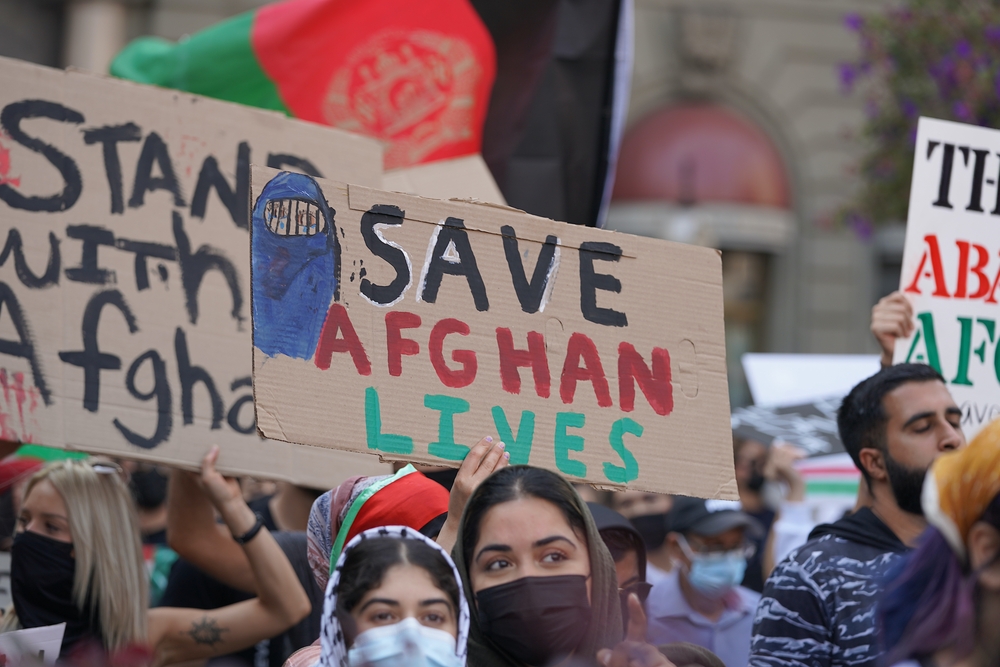When Kabul fell in 2021, tens of thousands of Afghans turned to the United States for refuge. Many arrived with the expectation of safety and stability. Four years later, they find themselves navigating a different kind of threat: a growing wave of anti-Afghan sentiment shaped by political rhetoric, discriminatory policies that block pathways to lawful immigration, and the online amplification of Islamophobic and anti-immigrant narratives.
The convergence of far-right disinformation, anti-immigrant and anti-refugee policies, and community-level hostility has produced an environment of precarity and fear for Afghan families across the U.S. Together, they have created a climate of anxiety and vulnerability that somehow mirrors, for many refugees, the authoritarian systems they once fled.
Since returning to the office in January 2024, President Donald Trump’s administration has adopted several policies that negatively impact the Afghan-American community. Shortly after his inauguration, Trump suspended the U.S. Refugee Admissions Program (USRAP) and later dismantled the State Department’s Coordinator for Afghan Relocation Efforts (CARE) office, a specialized body created after the fall of Kabul to oversee the U.S. government’s relocation and resettlement of eligible Afghans.
In May 2025, Secretary of Homeland Security Kristi Noem rescinded Afghanistan’s Temporary Protected Status (TPS) designation, citing “improved conditions” in the country despite widespread evidence of Taliban repression. The following month, Trump reinstated the travel ban, blocking most nonimmigrant and immigrant visas from several Muslim-majority countries, including Afghanistan. Only Afghan Special Immigrant Visa (SIV) holders, subject to intensified vetting, were exempted. He framed these policies as an effort to “to make America great again,” warning that many Afghans might have ulterior motives.
”We know the good ones, and we know the ones that maybe aren’t so good. We’re going to take care of those people, the ones that did a job [for us], the ones that were told certain things,” Trump stated.
His language drew a sharp distinction between deserving and undeserving Afghans, reinforcing a narrative that ties immigration status to perceived loyalty.
The overall political climate has translated into hostility on the ground. Afghan families across the country report heightened anxiety, harassment, and bullying in schools and neighborhoods. Women and girls wearing hijab are particularly targeted, and parents describe a growing sense of fear tied to Immigration and Customs Enforcement (ICE) raids and far-right rhetoric.
In February 2025, an Afghan family in Chicago received hateful and threatening notes referencing President Trump’s mass deportation campaign. One of the notes read, “Yes, President Donald Trump’s deportation is coming for you!!! Finally.”
Two months later, in April, three Afghan girls in Houston, Texas, were beaten by their peers after being mocked for their ethnicity and for wearing the hijab. Community organizations note that many such incidents remain undocumented or unreported, as families fear retaliation or lack trust in local authorities.
Increased ICE raids targeting Afghan nationals have deepened insecurity. Of roughly 200,000 Afghans evacuated or resettled since 2021, many entered under Humanitarian Parole or Special Immigrant Visa (SIV) programs, yet continue to face scrutiny and detention.
In June 2025, Sayed Naser, a former interpreter for U.S. forces, was detained by ICE in San Diego despite a pending SIV application. Officials claimed he had entered the country. “unvetted.” The following month, an Afghan interpreter in Hartford, Connecticut, who held humanitarian parole and an approved SIV, was arrested after attending a routine biometrics appointment for his green card.
Also in July, an Afghan man living in Virginia under humanitarian parole was detained while driving to work. His documents were valid, and he had no criminal history, yet the Department of Homeland Security later revoked his parole, leaving his U.S.-born children at risk of separation. In August, Arman Momand, a 19-year-old Afghan immigrant holding a special visa through his father’s service with the U.S. military, was detained by ICE at a courthouse in Virginia following minor traffic violations. His lawyer argued that the misdemeanor charges did not justify detention or deportation and that the arrest jeopardized his pending permanent residency application.
The Trump administration has repeatedly justified these actions by asserting that deportations focus on “the worst of the worst,” a claim that frames immigrants as inherently criminal. In reality, extensive research shows that immigrants are not driving violent crime in the United States; in fact, they are statistically less likely to commit crimes than native-born citizens.
Online spaces have become a major vector for amplifying anti-Afghan sentiment. On social media platforms, anti-Muslim and anti-refugee narratives circulate with minimal moderation. One dominant trope portrays Afghans as invaders seeking to “replace” Americans, borrowing from the “Great Replacement” conspiracy popularized by far-right influencers. Others depict Afghans as criminals, terrorists, or economic freeloaders draining public resources.
These narratives lend a veneer of legitimacy to xenophobia, framing hostility toward refugees as a matter of public concern or security rather than bias. The claims themselves are baseless, yet they are used to rationalize hostility. Many Afghans who once risked their lives to support U.S. forces are now portrayed as potential threats. What was once a relationship built on trust and shared sacrifice has been replaced by suspicion.
The rise in anti-Afghan sentiment in the U.S. demonstrates how policy, rhetoric, and online discourse can reinforce one another to marginalize a vulnerable community. For Afghans, these dynamics have evolved into a wider pattern of distrust and exclusion that erodes integration and community safety.
Addressing this pattern requires steady, practical interventions including restoring immigration pathways, improving transparency in enforcement processes, and holding digital platforms accountable for amplifying harmful content. Without such steps, the U.S. risks further eroding the trust of those who once viewed it as a safe haven. The question now is not only how many Afghans will be allowed to stay, but whether they can live without fear and with dignity in the country they were told would protect them.
